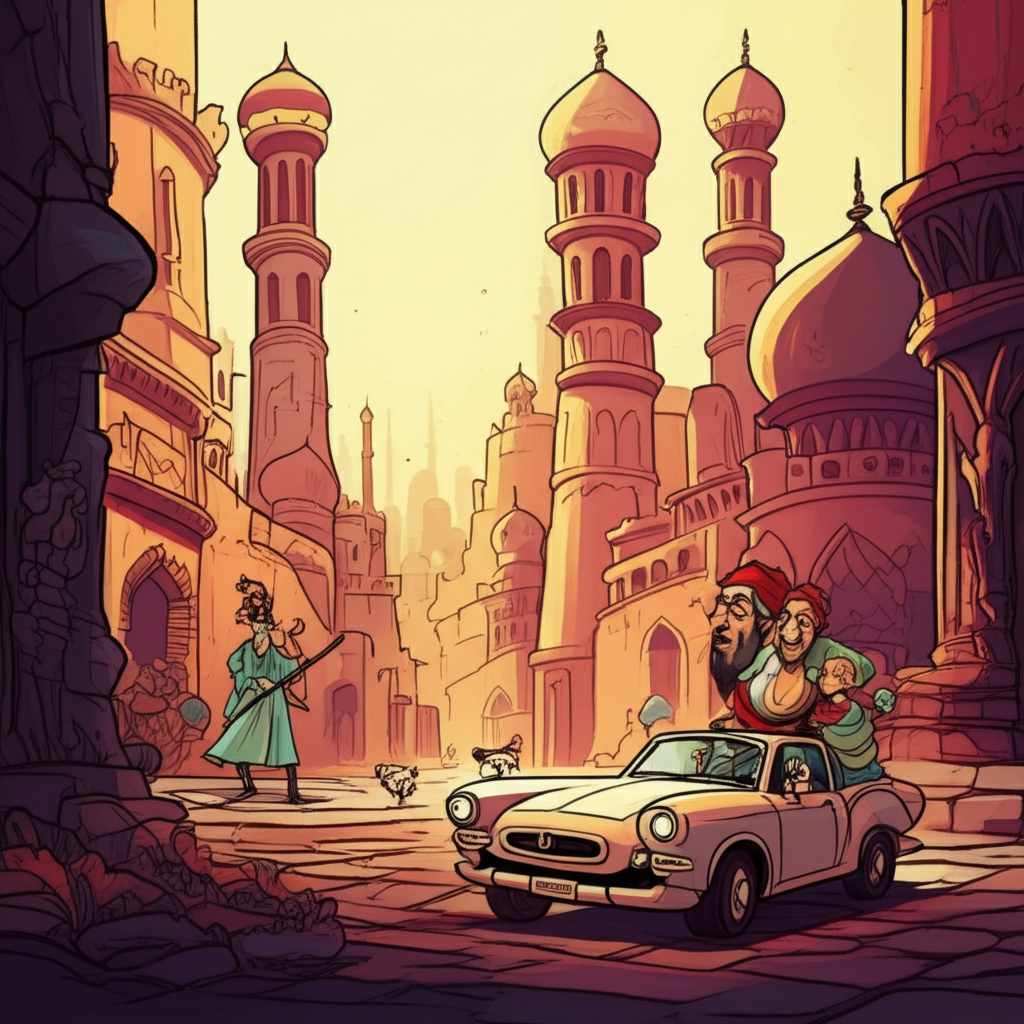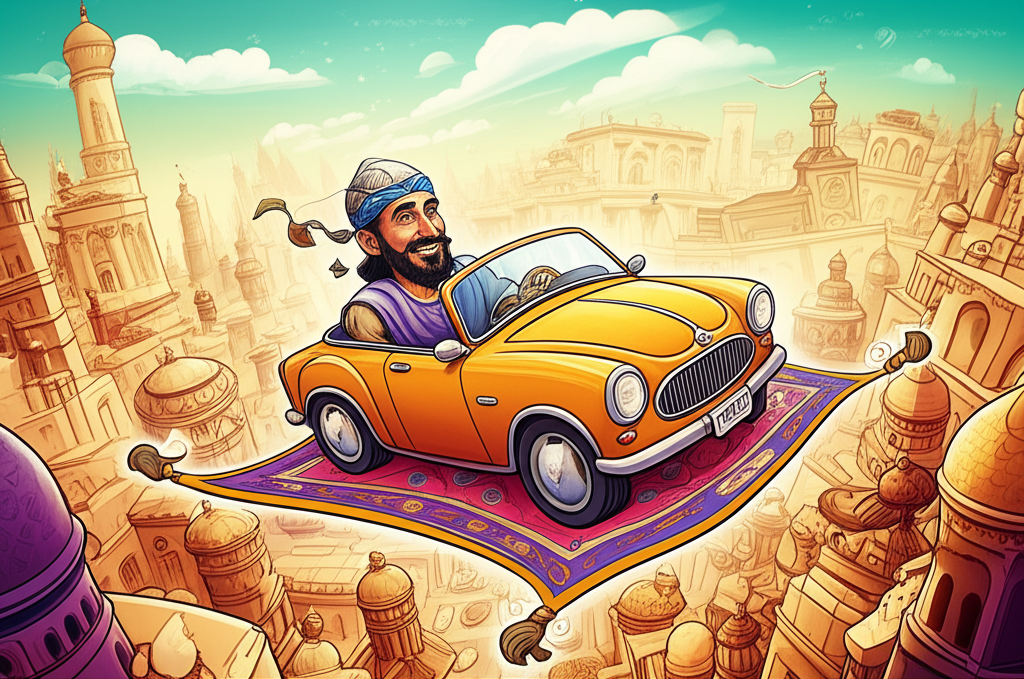
Introduction:
The tale of the City of Brass, a captivating legend from the rich tapestry of Arabian Nights folklore, transports us to a realm of djinn, hidden cities, and ancient wisdom. This is a traditional story, a vibrant thread woven into the cultural fabric of the Middle East, passed down through generations of storytellers. It is a story of adventure, ambition, and the consequences of seeking forbidden knowledge, a narrative shared by ancient people to illuminate their understanding of the world. This is not a truth to be worshipped, but a window into a bygone era of imagination and storytelling.
Origins and Cultural Background:
The story of the City of Brass originates from the classical period of the Islamic Golden Age, a time of flourishing intellectual and artistic pursuits. This era, roughly spanning from the 8th to the 13th centuries, saw advancements in mathematics, astronomy, medicine, and literature, all fueled by a deep respect for learning and the preservation of knowledge from ancient civilizations. The cultural environment was one of bustling cities like Baghdad, Damascus, and Cairo, vibrant centers of trade, scholarship, and artistic expression.
The people of this time viewed the world through a lens colored by both scientific curiosity and a strong belief in the unseen realm. They believed in the existence of djinn, powerful beings created from fire, capable of influencing the lives of humans, both for good and for ill. Stories like the City of Brass served as a means to explore themes of morality, the allure of power, and the importance of respecting the boundaries between the human and the supernatural. They were a way to understand the complexities of the world, navigate the uncertainties of life, and reflect upon the values held dear.
Character / Creature Description:
The djinn, the central figures in many Arabian Nights tales, are described as ethereal beings, often possessing extraordinary powers. They are not physical creatures in the same way humans are; instead, they are said to be created from smokeless fire. Their appearances vary widely, sometimes taking on human forms, sometimes resembling monstrous or grotesque creatures. They are said to have free will and can choose to be either benevolent or malevolent, acting as allies or adversaries to humankind.
The symbolism of the djinn is multifaceted. They can represent the forces of nature, the complexities of human desire, and the dangers of unchecked ambition. They can also represent the hidden knowledge and power that exists beyond the grasp of ordinary individuals. The djinn are not presented as divine beings, but as powerful entities that exist within the framework of a larger cosmic order, one ultimately governed by the divine will.
Main Story / Narrative Retelling:
The tale begins with a caliph, Harun al-Rashid, the renowned ruler of Baghdad, seeking a map. This map, said to lead to a lost city built of brass, a city rumored to be filled with unimaginable treasures and secrets. Driven by a thirst for knowledge and a desire to see wonders, the caliph commissions a daring expedition.
The explorers, a diverse group of scholars, adventurers, and mystics, venture into the desolate desert, guided by the ancient map. They face perilous journeys, harsh weather conditions, and encounters with strange creatures. They pass through ancient ruins, decipher cryptic inscriptions, and overcome numerous obstacles. Their determination is fueled by the legend of the City of Brass and the promises it holds.
After weeks of arduous travel, they finally stumble upon the magnificent city. It is a breathtaking sight, a testament to a forgotten civilization. The walls are indeed made of shimmering brass, reflecting the harsh sunlight of the desert. The city is eerily silent, devoid of any signs of life. Inside, they discover magnificent palaces, opulent chambers, and libraries filled with ancient texts.
As they explore the city, they find a chamber, and within, they find the bodies of former inhabitants – seemingly frozen in time. They find the remains of a king, a queen, and their court. A scroll is found near the king’s body, revealing the city’s tragic history. The king, consumed by his own arrogance and pursuit of forbidden knowledge, had angered a powerful djinn. The djinn cursed the city, turning its inhabitants into stone or leaving them in a state of eternal sleep, a punishment for their hubris. The city, once a beacon of civilization, now stands as a stark warning.
The explorers, humbled by the discovery, realize that the true treasure of the City of Brass is not gold or jewels, but the wisdom it offers. They collect the scroll, and after a period of reflection, they turn back to Baghdad, carrying the story of the fallen city and its cautionary tale.
Symbolism and Meaning:
The story of the City of Brass is rich in symbolism. The city itself can represent the allure of worldly possessions and the dangers of unchecked ambition. The treasures within are not simply material wealth; they represent the pursuit of knowledge and power, which, if pursued without wisdom and humility, can lead to ruin. The djinn, as we have mentioned, can be seen as a symbol of the unseen forces that can influence human lives, both positively and negatively. The fate of the city serves as a cautionary tale, warning against pride, greed, and the pursuit of knowledge without regard for morality and the natural order. The story encourages introspection, reminding listeners of the importance of humility, respect for the natural world, and the value of spiritual growth. It also highlights the ephemeral nature of earthly glory and the enduring power of stories to convey timeless truths.
Modern Perspective:
Today, the story of the City of Brass, along with other tales from the Arabian Nights, continues to capture the imagination of audiences worldwide. It has been adapted into numerous forms, from literature and film to video games and graphic novels. Authors and filmmakers have explored the themes of ambition, power, and the consequences of unchecked desires. The story’s evocative imagery and the mystery surrounding the djinn have inspired artists and creators across various media.
Cultural studies scholars analyze the story as a reflection of the cultural values and beliefs of the Islamic Golden Age. The story offers insights into the social structures, moral codes, and religious perspectives of the time. The story is a timeless exploration of the human condition, offering lessons about the pursuit of knowledge, the importance of humility, and the dangers of unchecked ambition.
Conclusion:
The tale of the City of Brass is a captivating story, a testament to the enduring power of imagination and storytelling. It serves as a reminder of the rich cultural heritage of the Middle East, a region that has contributed immensely to the world’s literary and artistic traditions. It is a story to be savored, not as a literal truth, but as a window into the minds of the people who created it.
As Muslims, we acknowledge that only Allah is the true Creator and Sustainer of all things. We recognize that these stories are part of a cultural legacy, a tapestry woven with threads of folklore, imagination, and wisdom. They offer valuable insights into the values and beliefs of a bygone era. We celebrate these stories for their literary merit and cultural significance, while remaining firm in our faith and understanding of the world. The City of Brass, and the stories like it, stand as a reminder of the enduring power of the human imagination and the beauty of our shared cultural heritage.





